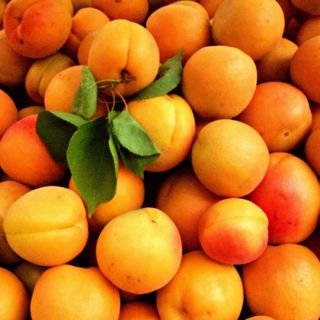
Apricot, (Prunus armeniaca L.) is a member of the Rosaceae family, along with same family of apple, pear, peach, and other stone fruits. The apricot belongs to Prunophora subgenus within Prunus along with plums. Hybrids between plums and apricots have been produced recently which are said to be finer fruits than either parent. It is somewhat acid in its raw state, but its acidity decreases and the sugar content increases in the process of ripening. The apricot is a stone fruit and has nut within it. It is round or oblong in shape, flattened to some extent. It is similar in shape as peach, but is considerably smaller. It is yellowish in colour. The fruit is regarded as a nutritious and tonic food and enjoys worldwide popularity.
Apricots are those beautifully orange coloured fruit full of beta-carotene and fiber that are one of the first signs of summer. The high fiber damask is very helpful for digestion, constipation, diverticulosis, and also the prevention of stomach cancer. In addition to fresh apricots, you can buy in jars or cans, as well as pickles and jams, and dried. Apricots, fresh and canned food, especially in dry, antioxidants that help prevent heart disease. The fruit which ripens on the tree alone develops its true flavours which are very much like that of the peach. In Northern Areas, apricots along with other deciduous fruits are primarily produced as cash crop where majority of families grow apricot. Average household had 28 trees of which 9 were bearing fruits and producing 750 kg of apricot per annum.
In several villages survey showed 180 different cultivars as a sample of variation that existed in the region. It had reported 31 local cultivars in district Ghangche of Baltistan. Overall, good quality apricot fruits are characterized as very high in soluble solids and sweet kernels with relatively small size. A farmer would often have as few as two or three trees of the same cultivar mixed with other. Therefore, grading becomes the main problem. Apricot is a main staple food, providing fresh fruit throughout summer, dried fruit and edible kernels for winter, oil from bitter seeds for lamps, and firewood in this relatively treeless land. Farmers own a variety of fruit plants including apricot, apples, almond, pear, cherry, walnut etc.
Fruits have mainly been produced to meet annual family needs for dry fruit particularly during severe winter. Among all respondents 86 per cent ranked apricot as their most preferred fruit tree. Because apricot would meet most of their subsistence needs. Dried apricot and kernels are main dry fruits for winter. Most fuel wood is obtained from apricot trees. Oil from kernels is obtained for various domestic uses. Cracked kernel shells are also used as fuel. There is considerable scope to introduce new cultivars with extended shelf life and successive ripening sequence over the season to extend the apricot marketing down to big commercial centers of plains. It is reported that about 60 apricot varieties in Northern Area where Halman, Karfo chuli, Marghulam and Shara karfa were the prime.
Most apricot cultivars blossom in early March. The blossoming time is about a fortnight and may be prolonged or shortened by the presence or absence of cold spell. Considerable variation is also shown by different cultivars in their blossoming habits. The incidence of frost during March is common and considerable damage to apricot crop is annually experienced. Apricot still needs farmers attention as a cash crop. So it should highly recommendations for northern areas famer to cultivate this bumper crop for sources of more earning.
The writers are associated with the Institute of Horticultural Sciences, University of Agricultural Faisalabad, Pakistan.